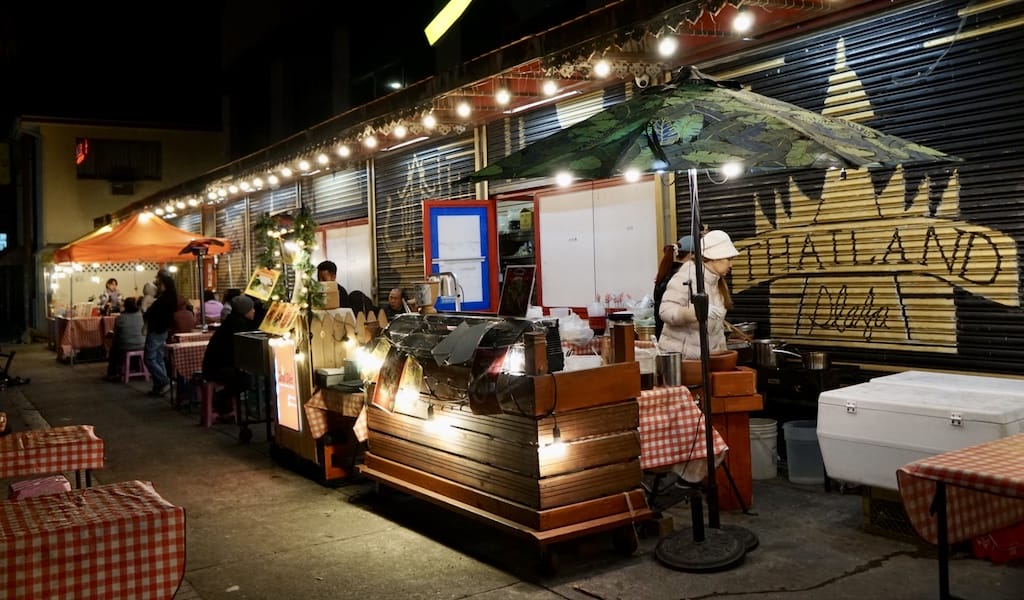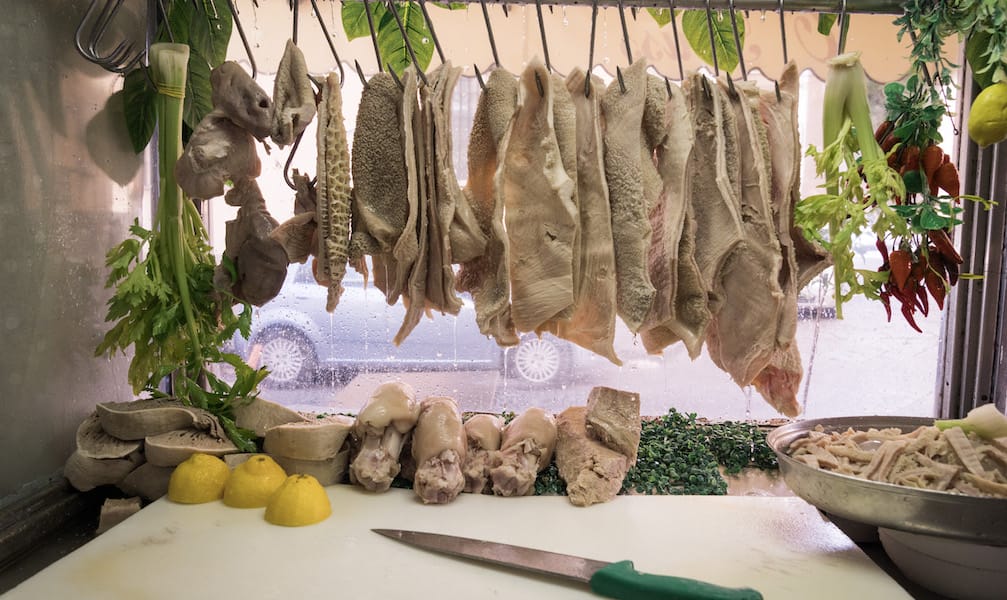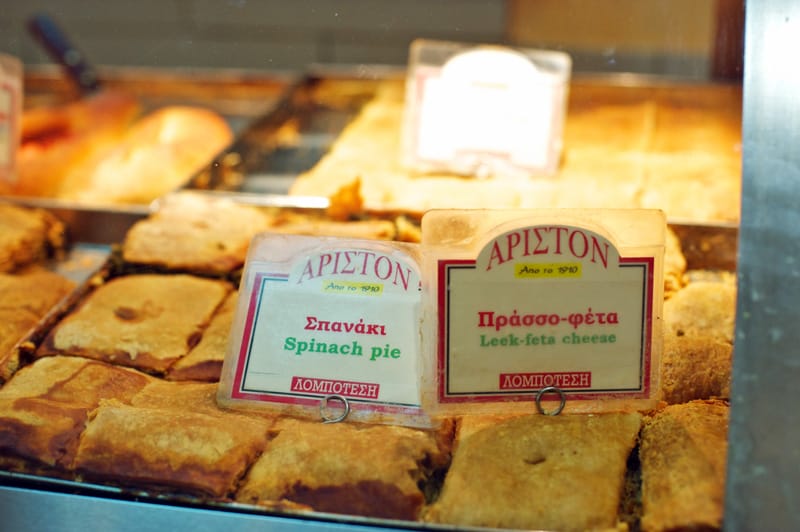As we daydream and plan our travels for the year ahead, there is no shortage of “top-ten” lists telling us where to go and what to do there. At Culinary Backstreets, we like to zoom way in – all the way to the individual neighborhoods that make up our favorite cities, and the daily life that takes place in their streets.
Sometimes the neighborhoods worth exploring in a city aren’t new, or “up-and-coming.” Oftentimes, a great neigborhood is one that’s been there all along, and deserves a second look. Maybe it’s a district whose residents and business owners are working to make changes, or an area where we’ve stumbled upon a restaurant that we had somehow missed before. We asked our local writers around the world to share the neighborhoods in their cities they’re excited to visit in 2024, and some of their favorite things to eat and drink there.
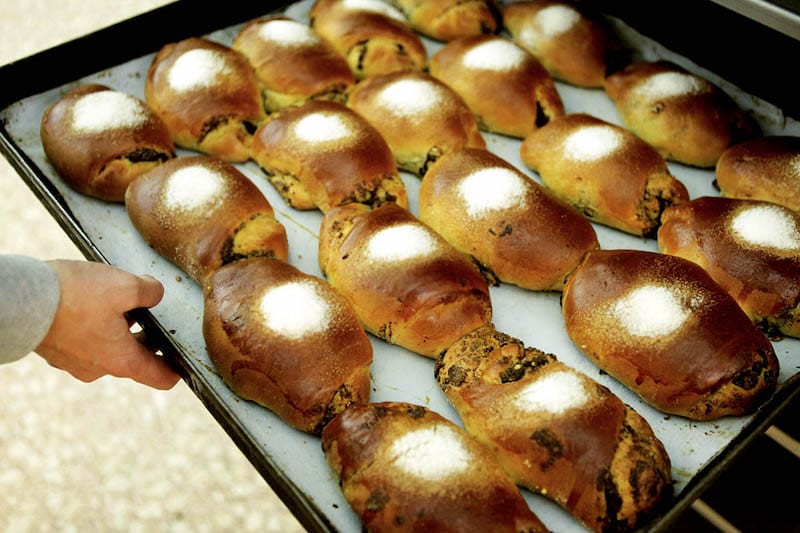
Athens: Kifissia
Kifissia is the queen of the Athenian suburbs, historically famous for its beautiful villas and gardens. Its significantly breezier climate and stunning green landscape differs quite a lot from other sides of Attica, which may be drier or far more densely built. In the 1830s, Kifissia became a popular summer destination for the city’s elite, and was further developed after 1882 with its new railway connection to central Athens.
As the suburb has been so popular among Athenians throughout the years, its culinary scene also developed early, with many of its historic eateries and pastry shops surviving to this day. One of the most historic venues is Varsos, a famous dairy shop founded in 1892. Nearby is the old tavern Katsarina which opened in 1893, serving classic Greek dishes in its paved courtyard. In addition to these old classics, the center of Kifissia is full of newer treats as well. Take Il Salumaio d’Atene, a top-notch Italian deli and restaurant; Different Beast, famous for its brunch; Blue Pine, an iconic old-school French restaurant with a stunning leafy garden; and Buba Bistrot, a funky Thai restaurant and cocktail bar housed in a beautiful house with a garden. – Carolina Doriti
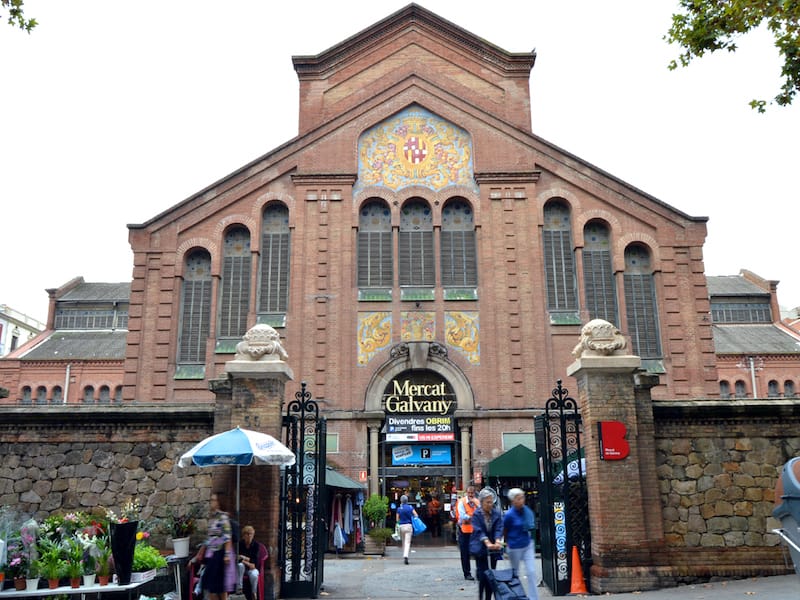
Barcelona: Sant Gervasi-Galvany
Today a land of comfortable, upscale homes and offices, the Sant Gervasi-Galvany area in the outskirts of the city once served as the site for the summer-houses of the 19th-century Barcelonean bourgeoisie. As a neighborhood, Sant Gervasi-Galvany got its name from its magnificent Modernist market and city landmark, built in 1868-1927 by Pere Falqués. These days, between a steady demand from locals willing to spend their money in gourmand shops, and office workers ready to pay a bit more for really good meals come lunchtime – the neighborhood is a great food destination. From classics like the rustic Casa Jordi to the always chic Flash Flash or the reborn Ultrarinos Marín, a wide selection awaits. Nowadays, the magnetism of the close city center in expansion is attracting even more interesting culinary opportunities to this area, including a few Michelin stars. – Paula Mourenza

Istanbul: Beyoğlu
If Istanbul’s old city represents its ancient and imperial history, the center of the city’s Beyoğlu district is the heart of its modern past, present and future. As tumultuous as the first century of the Turkish Republic, Beyoğlu is in a constant state of flux. It is the heart of culture and entertainment in Istanbul, and still carries the air of the cosmopolitan area it once was. Its impressive array of gorgeous turn-of-the-century European-style buildings is matched by no other area of the city. While a recent process of crass commercialization has turned many people away from Beyoğlu, the neighborhood is making a resurgence, evident by thriving meyhanes and watering holes such as Marlen and the recently-opened Sendika, a beautifully-designed space with a bar/restaurant on the first floor and a dance floor upstairs where DJs spin five nights a week. For us, Beyoğlu is always the place to be, good or bad changes notwithstanding. – Paul Benjamin Osterlund
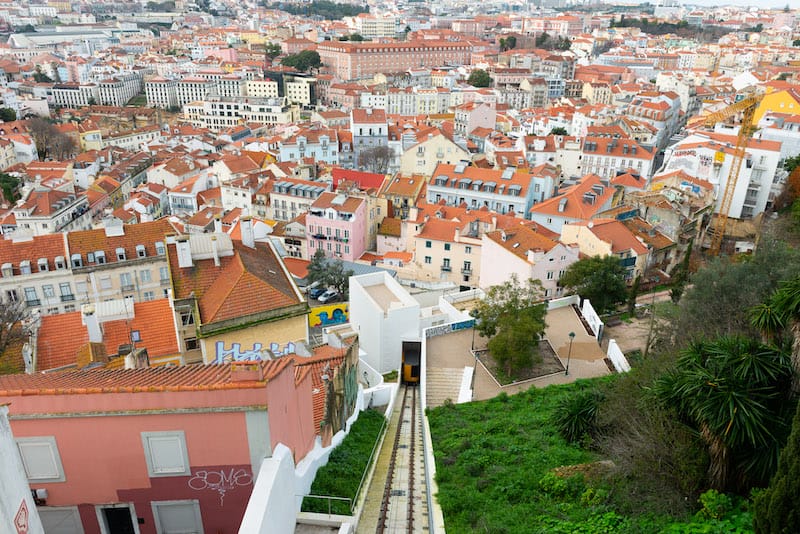
Lisbon: Graça
As Lisbon neighborhoods change more rapidly than one can keep track of, Graça kind of, sort of remains the same. Located at the peak of Santo André, one of the highest of Lisbon’s seven hills, Graça has managed to retain its classic Lisbon feel via family-run pastry shops and groceries, imposing churches and charming tile-fronted buildings. Locals still seem to dominate, with tourists making the trek uphill mostly to take selfies at some of Lisbon’s most famous miradouros, or viewpoints. A handful of classic eateries also draw folks to Graça, but in recent years, the neighborhood has emerged as the city’s sleeper destination for a drink. A number of venues – stuck-in-time sport clubs, cocktail bars run by young Brazilians (Criolense) and even more natural wine bars than our go-to Vino Vero – have resulted in yet another reason to visit Graça, a journey that will be made even easier when the recently-finished funicular is running later this year. – Austin Bush
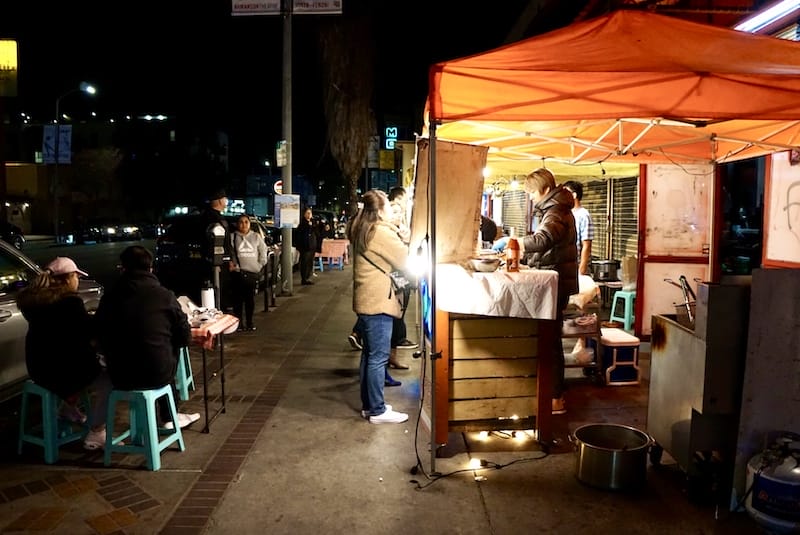
Los Angeles: Thai Town
Thai Town in East Hollywood has long been a favorite destination for food-loving Angelenos. The neighborhood began to grow after Bangkok Market opened as the United States’s first Thai Market in 1972 (unfortunately, the market closed in 2019). There’s a concentration of longtime Thai restaurants here, including the ever-popular Jitlada and its menu of over 300 dishes, and Sapp, whose jade noodles we’ve waxed poetic about. In the past year, the neighborhood is seeing a resurgence of interest with some exciting newcomers as well. Rad Na Silom started setting up an outdoor kitchen and tables in front of Silom Supermarket in 2020, and the sidewalk has since become a mini night market with other vendors joining in, including boat noodle specialist Mae Malai which has moved to a brick-and-mortar spot in the neighborhood. The family behind Thai Town standby Ruen Pair recently opened Kanomwaan, scooping up gelato and desserts with Thai flavors. Just a block away, Heng Heng Chicken Rice quickly gained a following for some of the best Hainan chicken rice and crispy zaab in the city. – Fiona Chandra
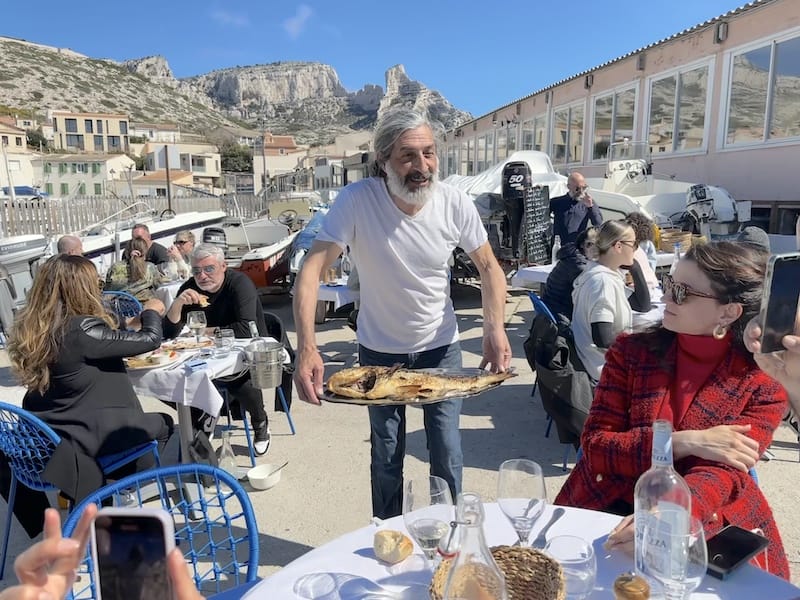
Marseille: Les Goudes and L’Estaque
Marseille’s 26 kilometers of coastline is shaped like an amphitheater, open wide to the Mediterranean and with its back to France – a topography that makes the city less French, more global and intrinsically linked to the sea. Two fishing villages captain each end. Though both brim with yesteryear charm, they differ in look and feel. The northern quartier of L’Estaque retains the working-class ethos of its industrial past and is famous for snack bars selling local delights: chichis fregis (donuts) and panisses (chickpea fritters). On the southern tip, Les Goudes and its freshly-caught fish restaurants feel like the end of the world, nestled between the Calanques National Park’s limestone cliffs and turquoise coves. While L’Estaque remains frozen in time, Les Goudes has become a hip hotspot in summer. Both villages reinforce Marseille’s contrasts, Mediterranean connection, and village-like makeup. Plus, they’re accessible via a public ferry for the cheapest ride on the Mediterranean. – Alexis Steinman
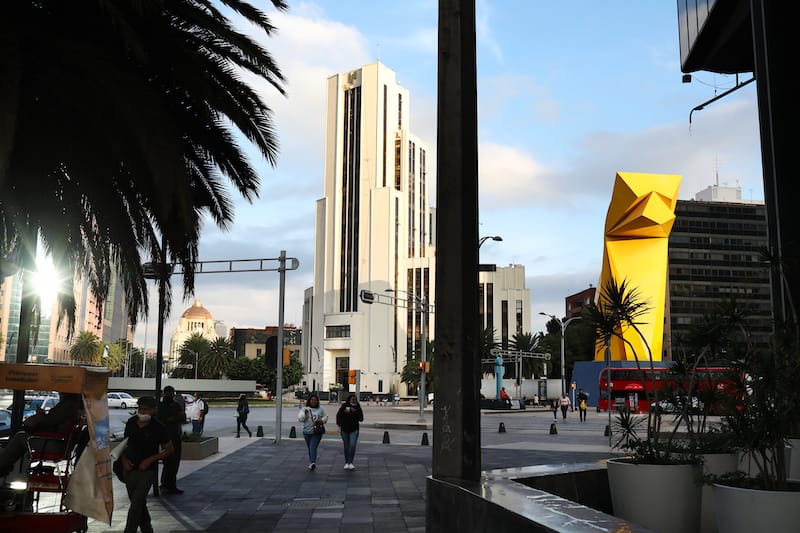
Mexico City: La Cuauhtémoc
Flanking Mexico City’s iconic Paseo de la Reforma, Cuauhtémoc boasts a privileged location. Host to the American Embassy, plenty of office buildings, and some of the swankiest hotels in town – such as the St. Regis, the Sofitel and the Ritz-Carlton – Cuauhtémoc was long regarded as a strictly-business district. As a consequence, its dining options were severely overlooked. However, over the past decade or so, hip additions like seafood temple Don Vergas and modern cantina Salon Ríos have joined neighborhood staples like French bistro Arlequin, and Mikado, a classic teppanyaki, diversifying the area’s culinary personality. Lovers of all things Japanese flock to Cuauhtémoc’s streets, too, thanks to chef-entrepreneur Edo Kobayashi’s mini-empire, which includes Tokyo Music Bar, Hiyoko and Rokai. – Cristina Alonso
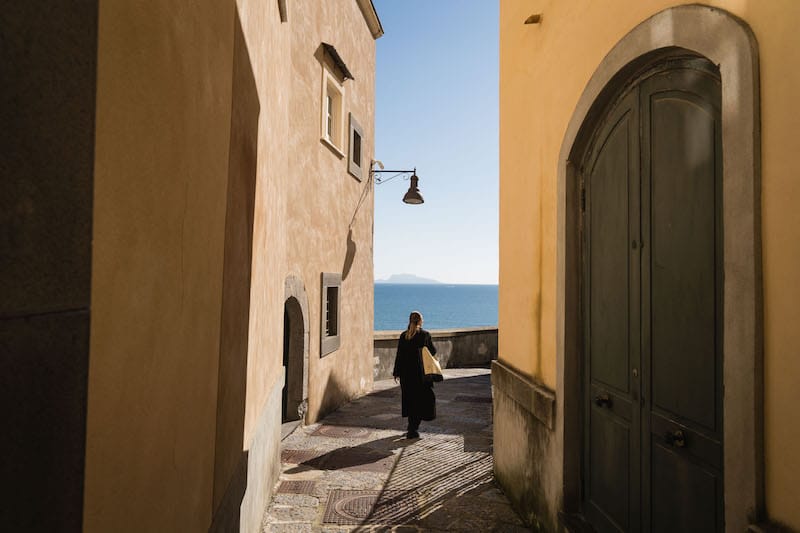
Naples: Pozzuoli
Nestled in the smaller bay of the Gulf of Naples, on the northern side of the Posillipo cape, Pozzuoli is the main center of the Phlegraean Fields. This wide and fertile volcanic area is still marked by craters, sulfurous fumes and bradyseism, rich with natural and archaeological treasures from Roman markets to the fascinating Rione Terra, the historic quarter built over the original Greek settlement whose stratification testifies the town’s past. Once a main Roman harbor and trading port, then a fishing village and today a busy ferry dock and lively neighborhood, Pozzuoli is an independent municipality. Yet many Neapolitans choose it as a relaxed residential area, or head here for sun-drenched morning strolls along the lovely seafront, Sunday lunches or bustling nights out, considering it part of the city suburbs. Easily reachable via the Cumana regional train line, Pozzuoli is a perfect day-trip destination to enjoy historic landmarks, beautiful views and excellent eats. You’ve got fish restaurants to great pizza places like La Dea Bendata or Diego Vitagliano, cheesemongers like Polyphemos and contemporary venues such as the eclectic Mar Limone, a bar, café and bistro launched by Michelin-starred chef Marianna Vitale. – Luciana Squadrilli
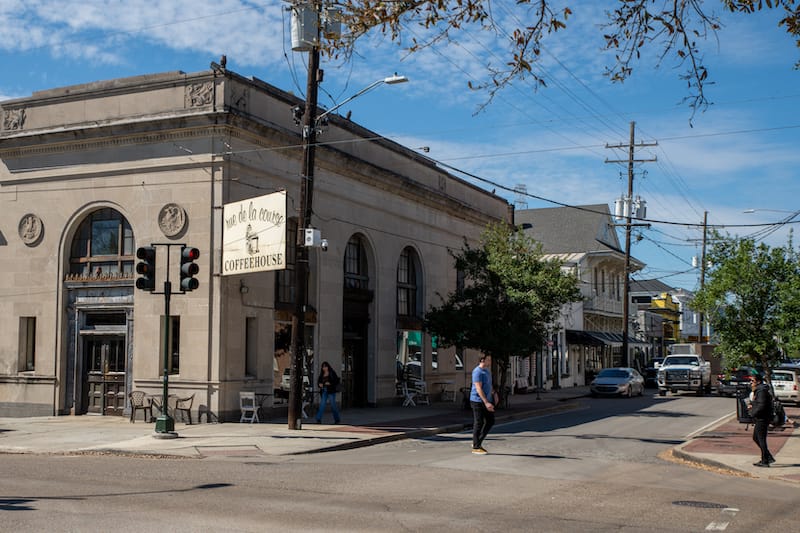
New Orleans: Oak Street
Oak Street, located in New Orleans’s Pigeontown neighborhood, seems like it exists in a different city – and at one time it did, in the Carrollton neighborhood that was annexed to the City of New Orleans in 1874. Upriver past the Audubon Park and the universities, a tributary to Carrollton Avenue, the serene, narrow Oak Street boasts a wealth of off-the-beaten path treasures. You can jumpstart your exploration with a cup of coffee at stately Rue de la Course or the funkier Z’otz Cafe, then wander down the street for a glazed brioche donut from Breads on Oak. Do a little shopping at Blue Cypress Books, or maybe grab a new chef’s knife at Coutelier NOLA. Sip a cold craft beer and grab a quick lunch at Calliope Beer Works, then have a dinner of Cajun-influenced Japanese food at Ajun Cajun, or maybe some jerked chicken at 14 Parishes Jamaican Restaurant. Or if you want a truly classic combo, hit Jacques-Imos, where the legendary chef Austin Leslie’s fried chicken recipe still reigns supreme, then a night of live music at the Maple Leaf Bar. And bring your sunglasses, because by the time you leave, it’s time to start all over again. – James Cullen

Oaxaca: La Reforma
Once an entirely residential and sleepy neighborhood, the northern Colonia Reforma has experienced some changes in the last five years, turning it into a great area for explorers in search of food in the city. Splashed throughout its avenues and hidden in dead-end streets, all sorts of restaurants, food stalls, cafes and pastry shops offer up interesting creations – both within and beyond Oaxacan food. Among these we can find Japanese-inspired restaurants like Kazoku Ramen, with their hearty broths and freshly made gyozas; hamburger joints; pizza places; regional local food like La Teca and La Güera, serving classics from the Isthmus like deep-fried garnachas and sweet-and-sour tamales; or bars with great music and finger foods, such as the outdoorsy Pal’Sur with weekly craft beer specials, amazing Negronis and gin-and-tonics, as well as the to-die-for Papas Griegas, french fries covered with a generous layer of molten feta cheese and oregano, all served to the sound of tropical and house music. Of course, the taquerías that were the pioneers of late-night food in the area shouldn’t be missed, like Tacomiendo and its amazing pastor and bistec tacos. While Colonia Reforma is still quite a residential area, the rise of businesses of all sorts is rapidly changing its social and environmental dynamics. This may represent a challenge for locals, and brings to light an important conversation around finding a meeting point in which people explore the area without threatening residents’ quality of life. – María Ítaka
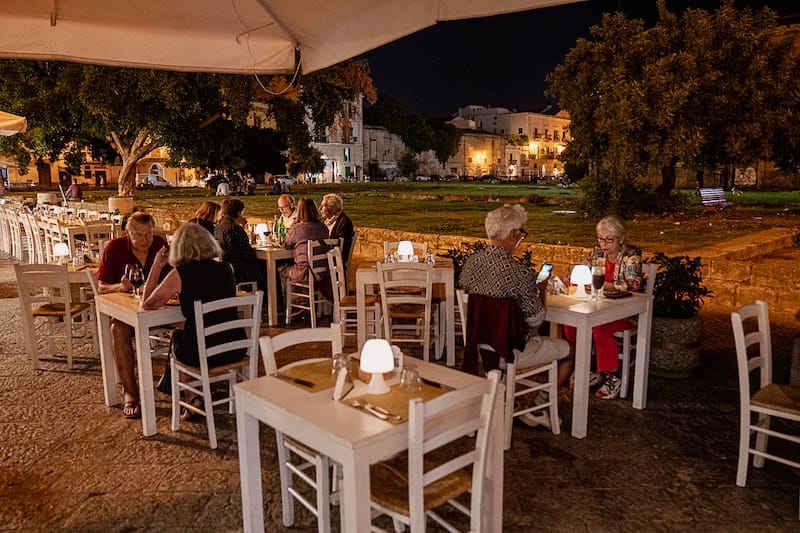
Palermo: Kalsa
Palermo’s Kalsa district, located in the heart of the city, dates back to the period of Arab rule, when it was known as “Al Halisah,” meaning “the chosen one” in Arabic – probably in reference to its strategic seaside location. Over the centuries, the Kalsa has witnessed various rulers and transformations, each of which has left an indelible imprint on its urban identity. However, until recently, the neighborhood was largely neglected and considered an uninteresting area.
This has changed with the recent redevelopment of Piazza Magione, one of the epicenters of the Kalsa: The ruins of World War II Allied bombing are still there, yet the large lawn in the center of the square has become a gathering place for young Palermitans who come here on sunny days. This revitalization has had a significant impact on the life of the neighborhood, stimulating the birth of new food and entertainment venues as well as artistic and social projects.
Today, the atmosphere is lively and dynamic, and residents mingle with travelers seeking authentic experiences. Walking through the streets of Kalsa means coming across a myriad of restaurants, pubs and pizzerias offering a variety of flavors and culinary traditions, from the pizzeria Ciccio Passami l’Olio in Piazza Magione to the nearby brewery Ballarak, which produces artisanal beers with Sicilian ingredients. – Francesco Cipriano
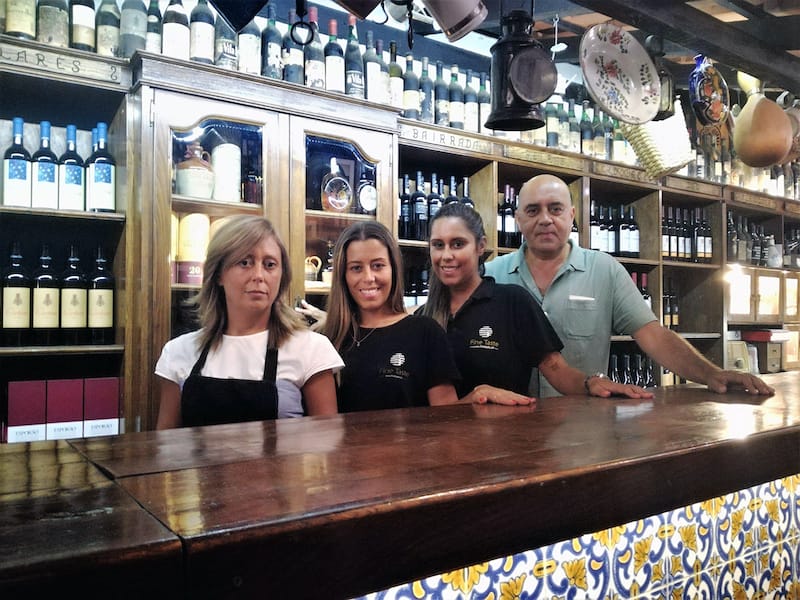
Porto: Bonfim
Among Porto residents, it is difficult to know precisely where Bonfim begins and ends, but there is no doubt that it is one of the city’s most beloved and traditional neighborhoods. Located between Jardim 24 de Agosto and Parque das Águas, it is an area for students and longterm residents. Still, recently, it has received an influx of artists and all types of young professionals due to the presence of the University of Porto’s Faculty of Fine Arts as well as STOP, one of the city’s most influential underground music centers. Previously more residential, the neighborhood has witnessed the increasing opening of design stores, bars and independent restaurants, such as Wagon, which mixes cocktails and food, and Porto Express, a unique place bringing flavors from Vietnam to the city. Not to mention traditional restaurants (and CB favorites) like authentic Cozinha do Manel or Xico dos Presuntos (one of the city’s best-kept secrets for eating a ham sandwich). A new coffee shop, Von & Vonnie, which roasts beans and bakes goods in-house, has also just opened its doors, giving just one more reason to visit Bonfim right now. – Rafael Tonon
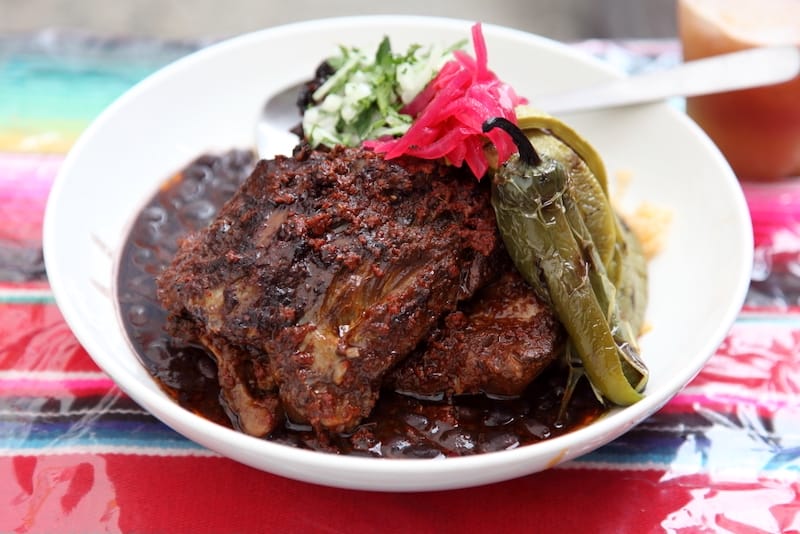
Queens: Woodside
The elevated 7 train that travels to Jackson Heights, Corona and Flushing also passes over Woodside, but the neighborhood shouldn’t be overlooked. True, Woodside is crisscrossed by Queens Boulevard and the Brooklyn-Queens Expressway, which corral many lanes of auto traffic at all hours, as well as the LIRR commuter rail. On paper, the neighborhood might seem like a patchwork, but in person – to our eyes – it’s a crazy quilt of wonderful food and drink.
Several blocks of Filipino restaurants – one favorite is Renee’s Kitchenette & Grill – welcome warm-weather street fairs on a stretch recently christened Little Manila. Year-round, a huddle of Irish pubs such as Donovans and The Wild Goose serve up shepherd’s pies, frothy pints and, on occasion, live traditional music. Woodside is home to a vast Tibetan community center, Phuntsok Deshe; an innovative Nepalese café, Momo Crave; and not just one Bhutanese restaurant, The Weekender, but now a second, Zhego. And, come spring, we plan to revisit a certain Mexican backyard for the borough’s best Sunday-only barbacoa, at Carnitas Los Jarochos. – Dave Cook
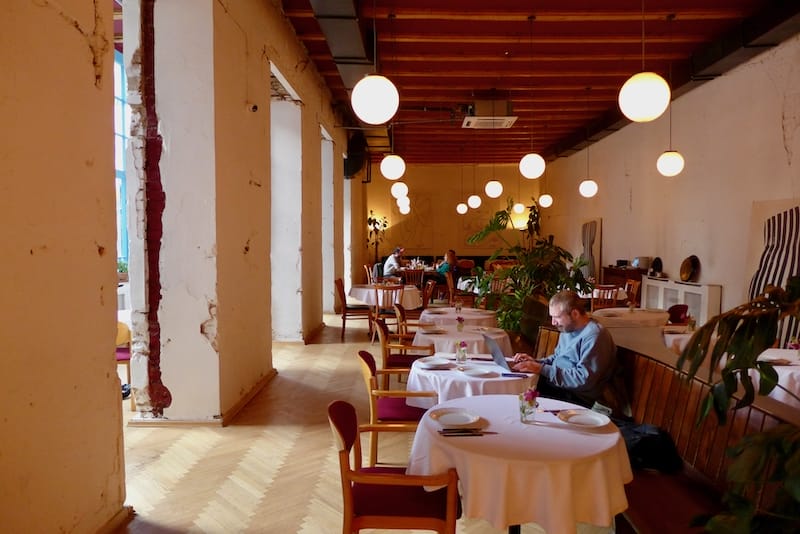
Tbilisi: Constitution Street
For visitors arriving by train in the Georgian capital, the dining options nearby the Tbilisi Central Railway Station fall short of the culinary richness and sophistication found in the rest of Tbilisi’s food scene. However, just a few blocks away, at the crossroads of Constitution Street and Ninoshvili Street, lies a small but burgeoning culinary cluster with inspiring restaurants and bars, plus a quaint homemade ice cream parlor called Ice Crime. Just a few streets away from the bustling and touristy Aghmashenebeli Avenue, this area, characterized by a mix of new tenements, turn-of-the-century historical buildings and a few former factories, has proved itself an ideal setting for establishing new gastronomic venues in the past few years. The largest restaurant, Honoré, features two terraces and a couple of elegantly designed dining rooms where patrons can indulge in contemporary Georgian and international dishes. Just a few steps away, you’ll find a Middle Eastern-influenced restaurant called Weller, a Georgian eatery serving natural wines, a quality fast-food booth and two cocktail bars. – Clément Girardot
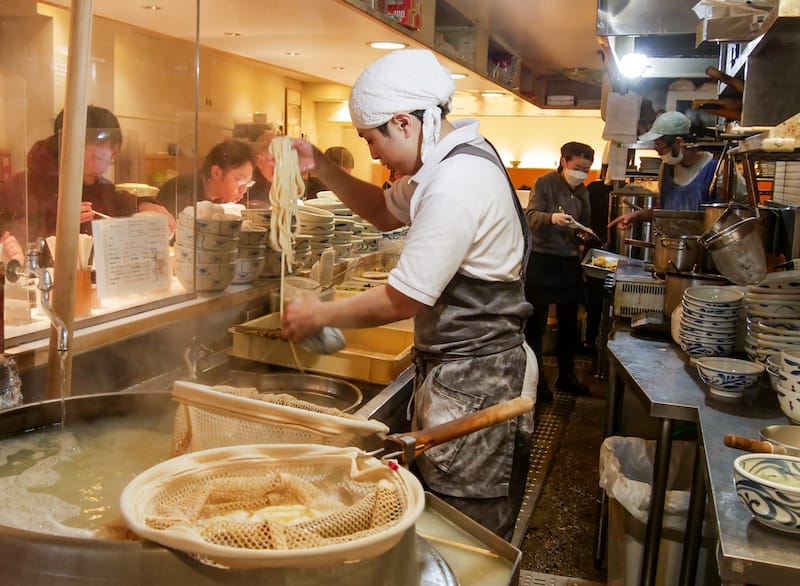
Tokyo: Ningyocho
Ningyocho is a pocket of central Tokyo that feels like a time slip. It developed as a vibrant district due to its proximity to Nihonbashi, the old downtown center of Tokyo/Edo during the Edo period (1603-1868). Its name literally means “town of the dolls,” a reference to its past as an area full of puppet theaters that served as entertainment for the masses. Nowadays, it’s dotted with stores that reflect the cuisine and crafts of olden times – traditional sweets, tea, sake, kimono – with hidden shrines improbably wedged between apartment blocks and offices. The best place for a stroll is Amazake-yokocho, literally “sweet sake alley”: stop by Morinoen, a 110-year-old tea store that specializes in roasted green tea and sweets; pause by Sokaya to watch rice crackers being crisped in the window; don’t miss the ugly-delicious tsukune (chicken meatball) from Toritada. There are more modern places moving in too, such as udon speciality restaurant Taniya, and the area has grown a reputation as a “tantanmen town” (a reference to addictive spicy sesame noodles). On the main Ningyocho-dori street, catch a performance on the hour by one of the karakuri mechanical clock towers and pick up some ningyoyaki, small doll-shaped cakes filled with sweet red bean paste, so you can literally nibble a bit of the history. – Phoebe Amoroso
 January 22, 2013 Hai Di Lao
January 22, 2013 Hai Di Lao
Good service in China is a relative term, and the longer you live here, the lower your […] Posted in Shanghai September 29, 2023 Tripperia O’Russ: No Guts, No Glory
September 29, 2023 Tripperia O’Russ: No Guts, No Glory
In a city like Naples, where almost every kind of street food – or food in general – […] Posted in Naples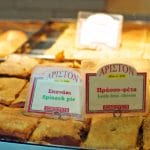 August 7, 2012 Ariston
August 7, 2012 Ariston
Greece has a fantastic tradition of pie-making. Most Greeks have memories of their […] Posted in Athens
Published on February 22, 2024
Related stories
January 22, 2013
ShanghaiGood service in China is a relative term, and the longer you live here, the lower your expectations sink. The Michelin Guide allegedly won’t deign to cross over the Hong Kong border into China because they refuse to sully their white-tablecloth reputation by doling out stars to restaurants with subpar service. But the inspectors must…
September 29, 2023
Naples | By Luciana Squadrilli
NaplesIn a city like Naples, where almost every kind of street food – or food in general – seems to be carb-and-calorie laden, there's one unexpectedly light, all-protein option: ’o per’ e ’o muss’. This tongue-twister dish has roots in the same food traditions common to many Italian regions: back in the 18th century, the…
August 7, 2012
AthensGreece has a fantastic tradition of pie-making. Most Greeks have memories of their granny making some sort of pie in a big pan for the family to share. Savory pies are sold in individual portions in bakeries (which are everywhere in Athens) and sandwich shops, or even whole and frozen in supermarket freezers, much like…







































